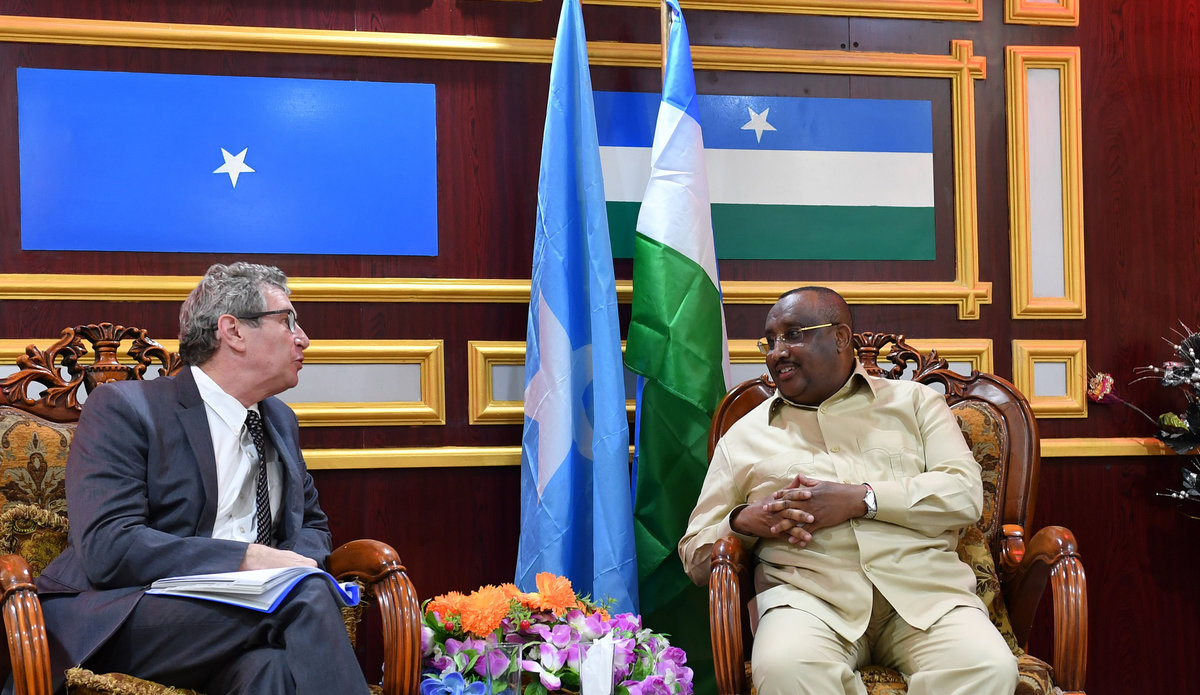Somalia still facing risk of famine, UN warns


The UN has warned the drought situation in Somalia still remains critical warning of a ‘strong possibility that famine-type conditions would develop’.
UN’s Humanitarian Coordinator for Somalia, Peter de Clercq noted in particularly the northern regions of the country such as Sool and Sanag were still facing severe drought conditions calling for scaled up humanitarian response.
In areas like Sool and Sanaag, there are still massive needs and a strong possibility that famine-type conditions would develop, de Clercq said adding, ‘we are not out of the woods yet by any stretch of the imagination.”
Speaking after meeting Puntland president Abdiweli Gaas, de Clercq said ‘they took stock of the drought response as it has been so far, looking back to what has been a good year in terms of close cooperation and a very successful drought relief effort’.
Gaas said the meeting was crucial in exploring ways of mitigating the effects of the drought.
“Mitigating the effects of the drought and helping the people who have been displaced by it was one of the main topics covered in the UN official’s meeting with President Mohamed Ali. “Our discussion was frank and candid, very fruitful,” the President noted afterwards.
In 2017, drought-related famine was averted through the efforts of Somalis and their international partners. However, the risk is not yet overcome as there are 5.4 million people in Somalia needing life-saving humanitarian assistance. Work is being done in all regions, including Puntland, to build and sustain resilience in all communities, especially the populations affected the most by the recurring cycle of drought and famine risk, such as pastoralists, displaced persons and fishing communities.